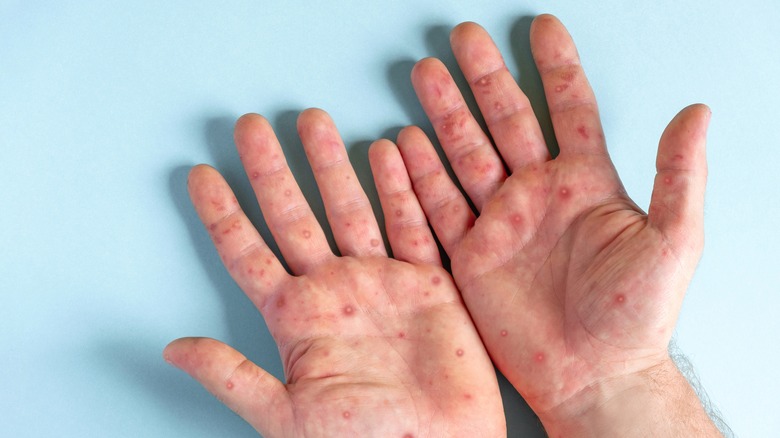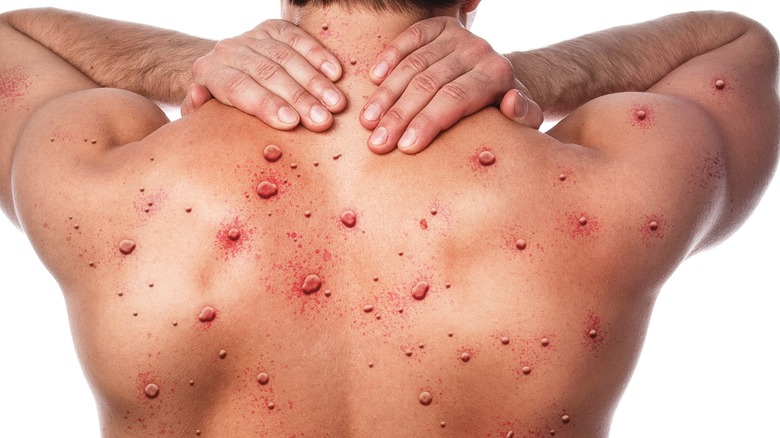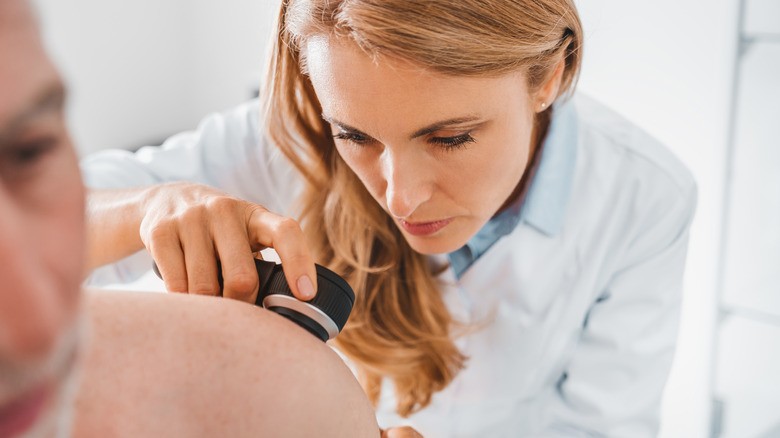Is It Monkeypox, Acne, Ingrown Hairs, Or Herpes? Here's How To Tell The Difference - Exclusive
Although monkeypox cases in the United States reached a peak at the end of July, the seven-day moving average of daily cases is at 68 as of October 5, according to the Centers for Disease Control and Prevention (CDC). Monkeypox is characterized by a rash in the genital areas, but the rash can also appear on other parts of the body. If you see a rash on your body, it might be difficult to tell whether or not it's monkeypox or something more benign, like an ingrown hair. In an exclusive interview with Health Digest, Dr. Cuong Le, Board Certified Dermatologist with U.S. Dermatology Partners Centreville, Virginia tells us how we can differentiate monkeypox from other health conditions.
"Monkeypox lesions typically are tender, painful, and feel firm and patients may develop fevers or chills," Le said. Although most of the monkeypox cases involve men having sex with men, Le said other people having these symptoms should see a doctor.
Telltale signs of monkeypox versus other skin conditions
"Monkeypox lesions begin as flat red macules or spots which progress to papules or bumps, to vesicles or blisters, and pustules — which can umbilicate and then scab," Le said. "Its appearance can vary depending on the stage and can last between two to four weeks after an incubation period of up to three weeks." Le added that the varying stages of the monkeypox rash can easily be confused with acne, ingrown hairs, or herpes.
"One way to differentiate acne is that it can present as comedones, which are blackheads or whiteheads, pustules, or cystic nodules," Le said. Acne can appear on the face, back, or torso, but monkeypox is typically found around the genital areas or the mouth.
Ingrown hairs might appear in the genital areas, Le said, so they can be easily confused with monkeypox. When the hair follicle gets infected, the resulting inflammation can be painful.
"Herpes can present anywhere on the body, including cold sores on the lips and lesions in the genital area," Le said. "The lesions look like vesicles, blisters, or scabs on a red base and are usually grouped. Patients can present with prodromal symptoms such as tingling or burning before the rash appears."
When to see a doctor
Le suggests seeing a board-certified dermatologist or healthcare professional if you developed a new lesion after being sexually active. "In addition, if you have a history of herpes or develop grouped vesicles, you should be seen and treated by a physician as well," Le said. "Patients should also be tested for STDs such as syphilis, gonorrhea, chlamydia, and HIV."
According to the CDC, some people with monkeypox might experience flu-like symptoms before a rash. Other symptoms of monkeypox include headache, swollen lymph nodes, or respiratory issues.
Le said that detecting monkeypox early is key so that you can isolate and help prevent the spread of the disease. Although the current monkeypox variant is mild, your doctor can prescribe antiviral medication for severe cases.
To learn more about what your dermatologist can do, head to U.S. Dermatology Partners Centerville. Find out more about Dr. Cuong Le, Board Certified Dermatologist here.



